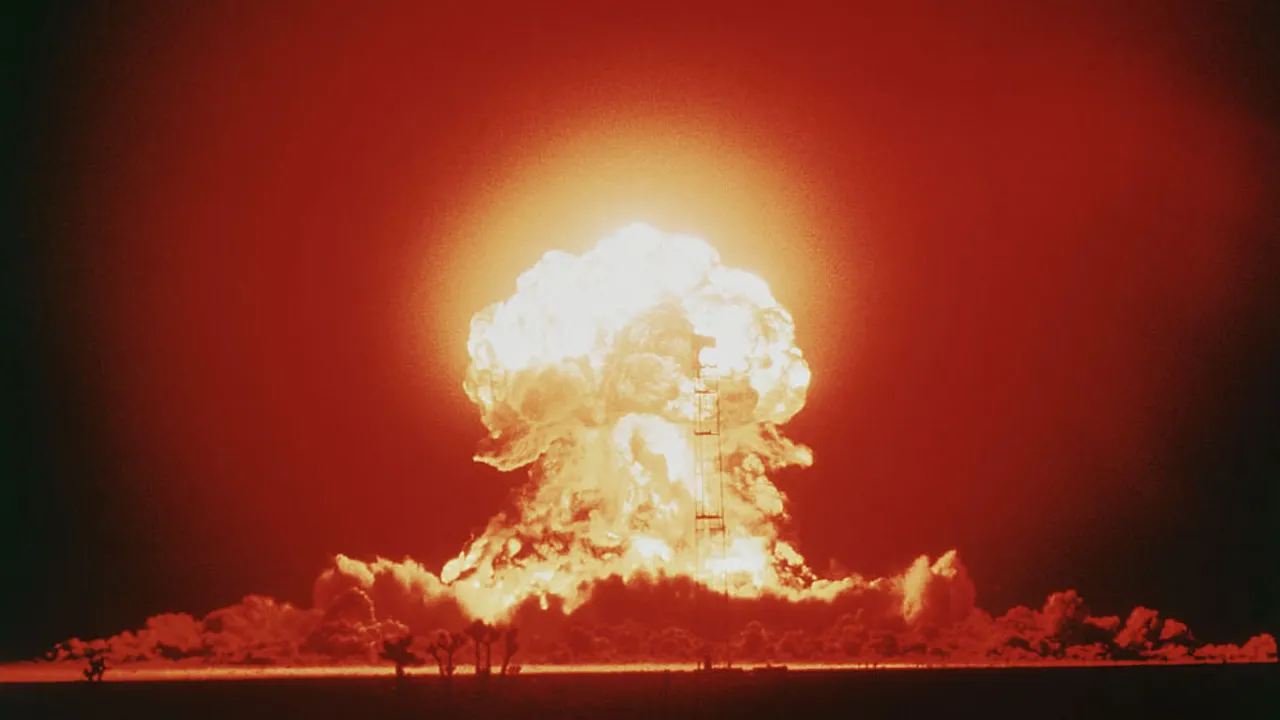Brussels (Brussels Morning Newspaper) – Since the potential for nuclear conflict has been at its highest point since the conclusion of the Cold War, a group of researchers decided to take a new look at the grim topic of what the world would be like if nuclear weapons were used. You may probably guess that the situation is fairly terrible. Let’s have a conversation about what would nuclear war look like in 2022!
Details About What would nuclear war look like in 2022
According to the research finding, an atomic war that included exchanging nuclear weapons by any of the world’s nine nuclear powers would result in enormous bellows of soot and smoke being forced into the upper atmosphere. This would prevent the sun from shining, resulting in a worldwide temperature drop of 7.2 degrees Celsius (13 degrees Fahrenheit) within a month and the loss of all crops.
Because the effects of nuclear war might endure decades or even centuries, perhaps plunging the Earth into a “Nuclear Little Ice Age,” the oceans could be negatively impacted much more severely.
Temperatures in the ocean would fall, particularly in the northern sections of the world’s oceans. The expanding expanse of sea ice would freeze the seas near important ports such as the Port of Tianjin in Beijing, Copenhagen, and St. Petersburg, placing a further burden on global commerce.
The severe cooling of the water, combined with the absence of sunlight, would lead to the widespread death of marine algae. As a consequence of the fact that this underlies a significant portion of the marine food chain, the seas would become famished, which would lead to the almost complete cessation of fishing and farming.
These cataclysmic impacts would be experienced in every one of the situations that the team researched. In addition, the effects of these explosions might be felt globally, notwithstanding the bombs’ locations.
Who would start the Nuclear War?
It makes no difference who is attacking who with bombs. It might be India and Pakistan or NATO and Russia. Both scenarios are possible. As soon as the smoke is discharged into the upper atmosphere, it begins to travel around the globe and affects everyone. According to a statement made by Louisiana State University Assistant Professor Cheryl Harrison, who was the primary author of the research,
The new study included the execution of several computer simulations by the researchers to investigate the effects of a variety of nuclear warfare scenarios on the systems of the Earth, given the capability of nuclear warfare today.
Presently, around 13,000 nuclear weapons are distributed globally among nine nations (although many of these warheads are technically “retired” and longer actively delayed). The United States and Russia control most of the world’s nuclear weapons. Still, France, China, the United Kingdom, Pakistan, India, Israel, and North Korea each possess more than 1,000 nuclear warheads.
They foresaw a nuclear exchange between the United States and Russia as one of the most significant confrontations that may take place. In one of these hypothetical situations, they envisaged Russia and the United States firing 4,400 nuclear warheads of 100 kilotons each against the opposing country’s key cities and industrial sectors. They calculated that this would cause fires to release into the upper atmosphere 149 billion kilos (330 billion pounds) of smoke and black carbon.
Read More: Most Guarded Places Where UK Nuclear Weapons Are Kept
Current Conflicts
Even if a limited nuclear conflict occurred between India and Pakistan, the repercussions would be disastrous on a global scale. In principle, these two nations might explode around 500 nuclear bombs with a yield of 100 kilotons apiece, producing up to 46 billion kilograms (103 billion pounds) of smoke and soot and preventing a significant quantity of sunlight from reaching the surface of the earth.
The research findings make one very clear: every effort must be made to keep the world free from nuclear war. In addition, the worldwide interconnectivity of the Earth’s systems in the 21st century makes the need for advertising it probably more pressing than at any other time in history.
“The current war in Ukraine with Russia and how it has affected gas prices shows us how fragile our global economy and supply chains are to what may seem like regional conflicts and perturbations,” Harrison continued. “It really shows us how our global economy and supply chains are extremely vulnerable to what may seem like regional conflicts and perturbations.”
Conclusion
What would nuclear war look like in 2022? If you get a nuclear alarm, pack your emergency luggage and go to the closest shelter immediately. Stay as far away from the windows, walls, and roof as possible if you aren’t in an underground bunker. Although the likelihood of nuclear war is minimal, any possibility of such widespread damage is unacceptable. Despite the seemingly insurmountable odds against us, we can always take measures to lessen the possibility of a catastrophic event.




